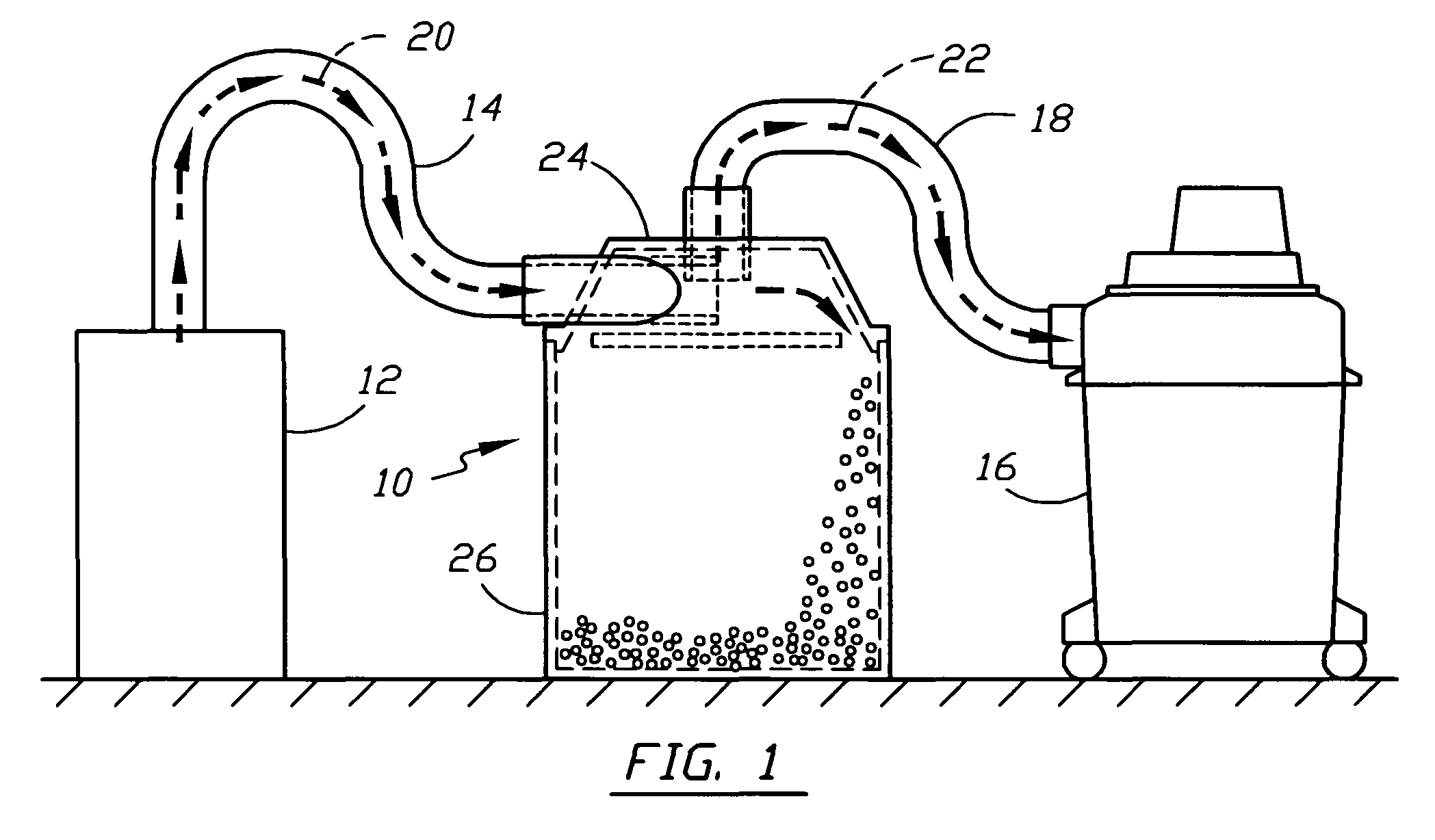Debris separator
a technology of dust separator and perforation, which is applied in the direction of liquid degasification, separation process, auxillary pretreatment, etc., can solve the problems of reducing the efficiency of the grill and therefore, the device, and the debris is subject to being drawn through the perforation for a relatively long time and distance, so as to achieve rapid and effective separation
- Summary
- Abstract
- Description
- Claims
- Application Information
AI Technical Summary
Benefits of technology
Problems solved by technology
Method used
Image
Examples
Embodiment Construction
[0041]Referring now to the drawings, there is shown in FIG. 1 a debris separator 10 of the present invention connected to a debris source 12 by a first conduit 14, and also to a vacuum source 16 by a second conduit 18. The first conduit 14 conveys debris-borne airflow 20 to the debris separator 10 while the second conduit 18 conveys substantially cleaned airflow 22 to the vacuum source 16. The debris source 12 may be, for example, a woodworker's power tool such as a table saw, or simply a pile of rubble. The debris separator 10 comprises a first chamber 24 and a second chamber 26 that is situated below the first chamber 24. The first chamber 24 functions to separate debris from the debris-borne airflow 20. The second chamber 26, which may be a commonly available pail or trashcan, functions to collect the separated debris.
[0042]FIG. 2 illustrates a preferred embodiment of the debris separator 10 shown in FIG. 1 whereby the first chamber 24 comprises a shroud 28, an input port 30, an ...
PUM
| Property | Measurement | Unit |
|---|---|---|
| pressure | aaaaa | aaaaa |
| force | aaaaa | aaaaa |
| arc distance | aaaaa | aaaaa |
Abstract
Description
Claims
Application Information
 Login to View More
Login to View More - R&D Engineer
- R&D Manager
- IP Professional
- Industry Leading Data Capabilities
- Powerful AI technology
- Patent DNA Extraction
Browse by: Latest US Patents, China's latest patents, Technical Efficacy Thesaurus, Application Domain, Technology Topic, Popular Technical Reports.
© 2024 PatSnap. All rights reserved.Legal|Privacy policy|Modern Slavery Act Transparency Statement|Sitemap|About US| Contact US: help@patsnap.com










